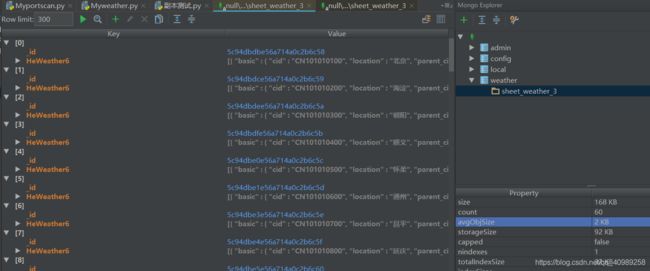(1用API爬取天气预报数据)Python爬虫与数据清洗的进化
1、一个简单网页源代码爬取
import requests
url='http://www.cntour.cn/'
strhtml=requests.get(url)
print(strhtml.text[:50]) #提取前50个字符
2、 使用Beautiful Soup解析网页,可以顺便安装一下lxml库,功能强大,速度更快。
- 复制CSS选择器路径。
- 将css选择器路径复制到soup.select中。
import requests
from bs4 import BeautifulSoup
url='http://www.cntour.cn/'
strhtml=requests.get(url)
soup=BeautifulSoup(strhtml.text,'lxml')
data=soup.select('#main > div > div.mtop.firstMod.clearfix > div.leftBox > div:nth-child(2) > ul > li > a')
for item in data:
result={
'Title':item.get_text(),
'Link':item.get('href'),
}
print(result)
3、使用正则表达式提取文章数字ID
\d 匹配数字 +匹配前一个字符一次或多次
使用re库的findall方法,第一个参数为正则表达式,第二个参数表示要提取的文本。
import requests
from bs4 import BeautifulSoup
import re
url='http://www.cntour.cn/'
strhtml=requests.get(url)
soup=BeautifulSoup(strhtml.text,'lxml')
data=soup.select('#main > div > div.mtop.firstMod.clearfix > div.leftBox > div:nth-child(2) > ul > li > a')
for item in data:
result={
'ID': re.findall('\d+', item.get('href')),
'Title':item.get_text(),
'Link':item.get('href'),
}
print(result)4、用API爬取天气预报数据
网址:https://www.heweather.com/
删除顶部不需要的数据使用remove方法,通过一个列表元素item循环输出每一行前14个字符(城市编码)
import requests
url='https://cdn.heweather.com/china-scenic-list.txt'
strhtml=requests.get(url)
strhtml.encoding='utf-8'
data=strhtml.text
new_data=data.split('\n')
for i in range(3):
new_data.remove(new_data[0])
for item in new_data:
print(item[0:14])调用接口获取数据
import requests
import time
with open('outcity.txt','r')as f:
list=f.readlines()
for i in range(2):
list.remove(list[0])
for item in list:
print(item[0:12])
url='https://free-api.heweather.net/s6/weather?location='+item[0:12]+'&key=5ce6464c17824a6ea9aa12dd749e2bc5'
strhtml=requests.get(url)
strhtml.encoding='utf-8'
time.sleep(1)
print(strhtml.text)将返回的json数据解析出来,通过观察路径接下来三天的最高温度在 ["HeWeather6"][0]["daily_forecast"][n]["tmp_max"]下面,其中n表示分节点
dic=strhtml.json()
for item in dic["HeWeather6"][0]["daily_forecast"]:
print(item["tmp_max"])将数据上传到mongodb中
import requests
import time
import pymongo #加载pymongo库
client=pymongo.MongoClient('localhost',27017) #建立连接
book_weather=client['weather'] #新建weather数据库
sheet_weather=book_weather['sheet_weather_3'] #在weather库中新建sheet_weather_3表
with open('outcity.txt','r')as f:
list=f.readlines()
for i in range(2):
list.remove(list[0])
for item in list:
print(item[0:12])
url='https://free-api.heweather.net/s6/weather?location='+item[0:12]+'&key=5ce6464c17824a6ea9aa12dd749e2bc5'
strhtml=requests.get(url)
strhtml.encoding='utf-8'
time.sleep(1)
dic=strhtml.json()
sheet_weather.insert_one(dic)在pycharm中下载mongo plus插件可以便捷查看数据。
MongoDB数据库查询(北京的天气数据)
import pymongo
client=pymongo.MongoClient('localhost',27017)
book_weather=client['weather']
sheet_weather=book_weather['sheet_weather_3']
for item in sheet_weather.find({'HeWeather6.basic.location':'北京'}):
print(item)查询最高温度低于20摄氏度的城市 $lt:< $lte:<= $gt:> $gte:>=,其中update_one方法用于指定更新一条数据,第一个参数{'_id:item['_id']}表示要更新的查询条件。第二个参数表示要更新的信息,$set是MongoDB中的一个修改器,用于制定一个键并更新键值,若键不存在则创建一个件键。
import pymongo
client=pymongo.MongoClient('localhost',27017)
book_weather=client['weather']
sheet_weather=book_weather['sheet_weather_3']
for item in sheet_weather.find():
tmp_max=item["HeWeather6"][0]["daily_forecast"][0]['tmp_max']
sheet_weather.update_one({'_id':item['_id']},{'$set':{'HeWeather6.0.daily_forecast.{}.tmp_max'.format(0):int(tmp_max)}})
for item in sheet_weather.find({'HeWeather6.0.daily_forecast.0.tmp_max':{'$lt':20}}):
print(item['HeWeather6'][0]['basic']['location'])


